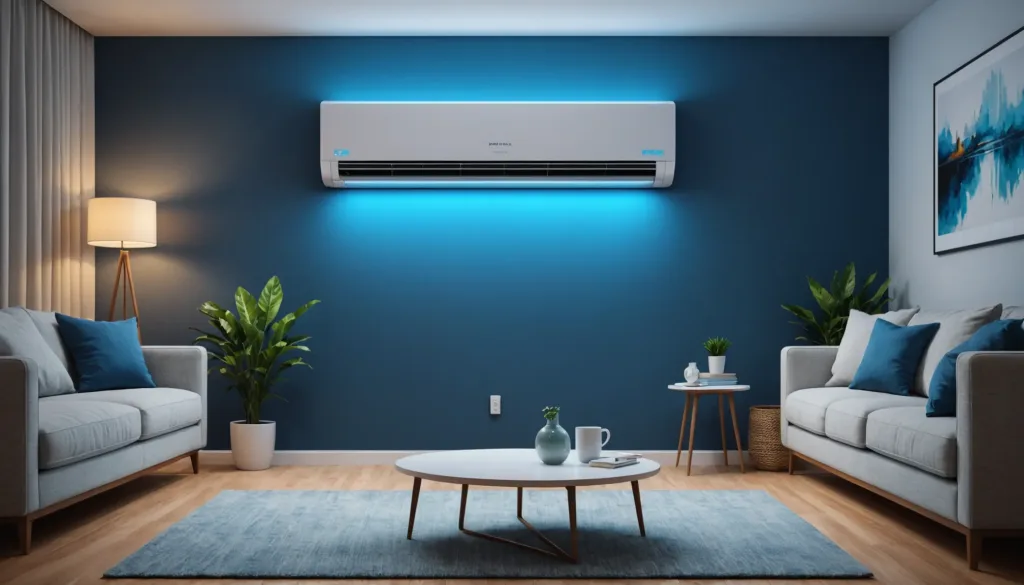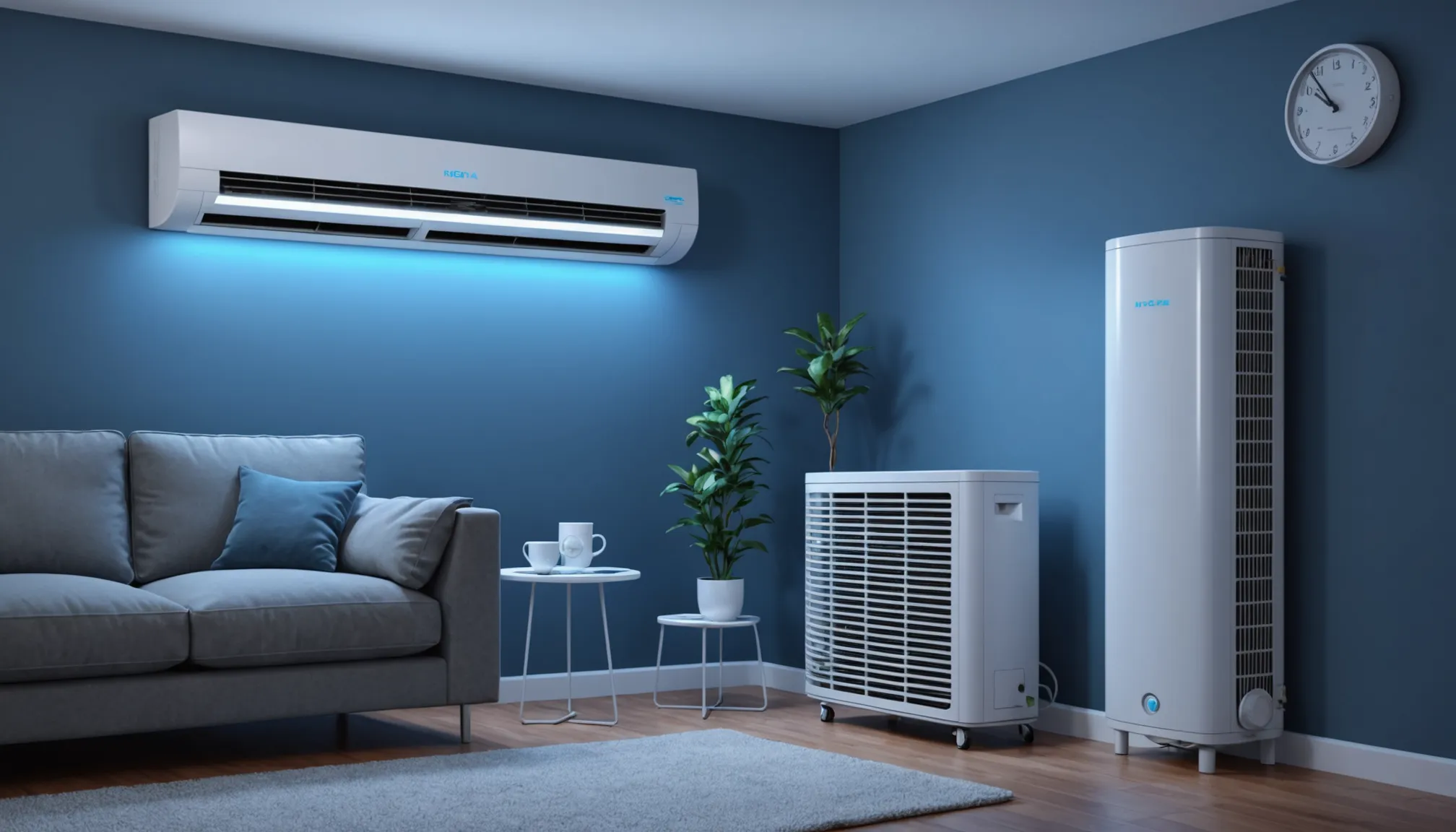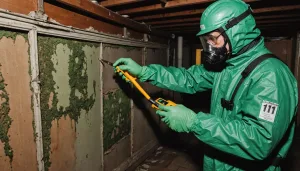Enhancing ventilation in your home is a fundamental step towards improving indoor air quality, which directly impacts your home health. Fresh air circulation is crucial as it reduces the concentration of indoor pollutants, dilutes any lingering odorous substances, and helps maintain an equilibrium with outdoor air conditions. Proper ventilation provides a consistent supply of fresh air, thereby improving air quality and your family’s overall well-being.
One of the primary ways to enhance ventilation is by optimizing your HVAC (Heating, Ventilation, and Air Conditioning) system. A well-maintained HVAC system not only helps regulate temperature but also plays a pivotal role in controlling the flow of clean air throughout your home. Regularly replacing air filters and ensuring the system is serviced annually will keep it operating efficiently. Clean filters and ducts reduce the circulation of allergens and dust, positively influencing your indoor environment.
Additionally, natural ventilation methods such as opening windows and doors when weather permits should not be underestimated. Allowing natural cross-ventilation to occur can dramatically improve airflow, especially in kitchens and bathrooms where moisture and odors tend to accumulate. Effective natural ventilation removes stale indoor air and replenishes it with fresh outdoor air.
In more confined spaces or during extreme weather conditions where opening windows may not be feasible, consider using exhaust fans. Install fans in bathrooms and kitchens—places where moisture, odors, and pollutants are most prevalent. Operating these fans when you cook, shower, or use household chemicals helps to expel contaminated air and introduce new air into your living spaces.
Energy recovery ventilators (ERVs) or heat recovery ventilators (HRVs) are advanced options that integrate with your existing HVAC system to provide controlled ventilation. These systems exchange indoor and outdoor air without significant energy loss, capturing and warming incoming cool air in the process, making them suitable options for cold climates. Here’s a simple comparison between ERVs and HRVs:
| Aspect | Energy Recovery Ventilator (ERV) | Heat Recovery Ventilator (HRV) |
| Function | Transfers heat and humidity between indoor and outdoor air streams. | Transfers heat only, ideal for drier climates or homes. |
| Benefits | Balances humidity, reduces energy costs, maintains comfort. | Prevents heat loss, enhances air quality without additional humidity control. |
| Best Use | Climates with high humidity or where moisture control is needed. | Colder, drier climates needing significant heat retention. |
Correctly implemented ventilation strategies result in noticeable improvements in indoor air quality and relate closely to improved home health. Each household may have unique ventilation needs; therefore, consider consulting with a professional to assess and recommend the best ventilation solutions tailored to your space.
Houseplant selection
Selecting the right houseplants is an effective and natural way to enhance your home’s air quality. Many plants can filter out harmful pollutants and toxins from the air, providing a healthier atmosphere. Here’s a step-by-step guide to help you choose and care for the right indoor plants that can improve air quality and contribute to your home health:
- Identify Indoor Air Pollutants: Begin by understanding the specific pollutants present in your home. These may include formaldehyde from household products, benzene from paints, or xylene from tobacco smoke. Knowing the common pollutants will help in selecting the appropriate plants.
- Select Air Purifying Plants: Research and choose plants known for their air-purifying capabilities. Some well-known examples include:
- Spider Plant (Chlorophytum comosum): Effective against formaldehyde, xylene, and benzene.
- Peace Lily (Spathiphyllum): Known to filter ammonia, formaldehyde, and benzene.
- English Ivy (Hedera helix): Good for reducing mold presence in the air.
- Snake Plant (Sansevieria trifasciata): Filters out toxins like formaldehyde and is ideal for low-light environments.
- Evaluate Your Space: Consider the lighting conditions, temperature, and humidity levels in different areas of your home. Some plants thrive in bright, indirect sunlight, while others do well in low light. Choose plants that will adapt well to the specific conditions of each room.
- Create a Care Plan: Ensure that you have a care routine in place for each type of plant. This should include:
- Regular watering schedules according to each plant’s needs—not every plant requires daily watering.
- Proper potting using well-drained soil to prevent root rot, especially in plants like Peace Lilies.
- Fertilizing during growing seasons to keep plants healthy and effective.
- Strategic Placement: Place plants in areas where they can have the maximum impact. For instance, position plants like Snake Plants in bedrooms to aid in oxygen production overnight, while Peace Lilies can be suited for living areas for optimal air filtration.
- Monitor Plant Health: Regularly check your plants for any signs of distress, such as yellowing leaves or pest infestations. Healthy plants not only contribute more effectively to air purification but also enhance the visual appeal of your home.
By thoughtfully selecting and positioning the right houseplants, you can significantly contribute to improved air quality, and thereby, enhance the overall home health. The presence of lush greenery not only cleans the air but also adds a calming aesthetic, creating a sanctuary of comfort and wellness.
Regular cleaning habits
Integrating regular cleaning habits into your routine plays a vital role in maintaining exceptional indoor air quality and supports your overall home health. These habits help minimize the presence of dust, allergens, and other pollutants that can build up over time, thereby ensuring a cleaner and more breathable environment for you and your family.
Start by focusing on frequently dust-prone areas, such as furniture surfaces, window sills, and electronic devices. Regular dusting using a microfiber cloth can significantly reduce dust accumulation, which often contains allergens like pollen, pet dander, and dust mites. Microfiber cloths are highly effective because they capture dust particles instead of merely pushing them around.
Vacuuming with a high-efficiency particulate air (HEPA) filter-equipped vacuum cleaner is another key step in your cleaning regime. HEPA filters are designed to capture tiny particles that other vacuums might miss, including pet dander and microscopic allergens. Frequent vacuuming, particularly in high-traffic areas, reduces the risk of these particles circulating in your home, thus improving air quality.
Incorporating the practice of washing bedding, curtains, and other fabrics regularly is crucial. These materials can harbor dust mites and other allergens, so laundering them in hot water can help eliminate these pollutants. Consider using hypoallergenic pillows and mattress covers for additional protection against allergens.
Pay special attention to high-moisture areas like bathrooms and kitchens. Mold and mildew thrive in these environments, potentially releasing spores into the air that adversely affect indoor air quality. Regularly cleaning and drying these areas, using natural products like vinegar or baking soda, can effectively prevent mold growth and maintain a healthy living space.
Adopt a no-shoes policy inside your home. Shoes can track in numerous pollutants and chemicals from outside, contributing to poor air quality. By asking family members and guests to remove their shoes at the entrance, you can significantly reduce the introduction of these contaminants indoors.
Consider practicing strategic decluttering as part of your cleaning routine. Clutter not only collects dust but also impedes effective cleaning. By minimizing clutter, you make it easier to maintain cleanliness and keep surfaces dust-free, contributing to improved home health over time.
Lastly, don’t overlook the power of fresh air. Regularly airing out your home by opening windows and doors when the weather permits can help circulate cleaner outdoor air inside, reducing the concentration of pollutants and refreshing your indoor space.
Incorporating these regular cleaning habits into your lifestyle is a proactive way to maintain a healthy home environment. Sustaining these practices ensures that your home remains a safe haven with high air quality, benefiting both your respiratory health and overall well-being.
Use of air purifiers
Investing in a high-quality air purifier can make a substantial difference in your home’s air quality, acting as a formidable ally in your quest for better home health. These devices are specifically designed to filter out pollutants, allergens, and contaminants from the air, resulting in cleaner, fresher air to breathe. While your HVAC system is essential for maintaining comfortable temperature levels and some degree of air cleanliness, it may not catch all airborne particles, making air purifiers a valuable addition to your home.
When choosing an air purifier, prioritize devices with HEPA filters, as these are proven to capture up to 99.97% of particles, including dust, pollen, and pet dander, that measure 0.3 microns or larger. Some advanced models also include activated carbon filters capable of tackling odors and gaseous pollutants such as volatile organic compounds (VOCs) emitted from household items like furniture, paint, and cleaning products.
For maximum effectiveness, select a purifier that matches the room size you intend to use it in. Most manufacturers provide recommendations based on square footage, allowing you to ensure optimal performance. Consider where contaminants are most prevalent in your home when positioning your air purifiers; common areas include living rooms and bedrooms, as these spaces typically see higher occupancy and activity.
To further optimize air purifier function, make sure you’re cleaning or replacing filters at the intervals specified by the manufacturer. A clogged filter will diminish the purifier’s performance, allowing more pollutants to remain in your indoor air. Regular maintenance ensures the unit continues to operate efficiently, contributing positively to air quality.
Integrate air purifiers alongside your HVAC system to establish a cleaner and healthier living space. The combination of a robust filtration system, strategic positioning, and diligent upkeep significantly reduces indoor air pollution, promoting home health and improving overall well-being. By taking these proactive measures, you create a sanctuary within your home, safeguarding your health and providing peace of mind about the air you and your family breathe.
Controlling humidity levels
Managing humidity levels in your home is a crucial aspect of enhancing indoor air quality and ensuring overall home health. Humidity that is too high can create an ideal environment for mold, mildew, and dust mites, all of which contribute to poor air quality and can trigger allergies or asthma. Conversely, air that is too dry can lead to respiratory irritation and dry skin. Thus, maintaining a balanced humidity level is key to creating a healthy and comfortable living space.
To start, it’s essential to monitor the humidity levels in your home. Ideally, indoor humidity should be kept between 30% and 50%. This range is optimal for comfort and prevents the growth of mold and dust mites. A simple humidity gauge or hygrometer can help you measure and monitor these levels accurately.
For those battling high humidity, especially common in warmer climates or seasons, the use of dehumidifiers can be highly effective. These devices remove excess moisture from the air, preventing the growth of mold and reducing allergens. Ensure your dehumidifier is the right size for the area you’re using it in and maintain it properly for optimal performance. Regularly empty and clean the water collection container to prevent bacteria and mold from forming.
In the colder months, humidity tends to drop, making humidifiers beneficial for adding moisture back into the air. These devices can help prevent dry, itchy skin and respiratory issues that can worsen in dry conditions. When using a humidifier, it’s crucial to maintain it well, as stagnant water can become a breeding ground for bacteria. Clean the unit regularly and follow the manufacturer’s instructions for use and care.
Beyond using humidifiers and dehumidifiers, you can naturally manage humidity by ensuring your home is well-ventilated. As previously noted, proper ventilation helps disperse moisture-laden air, especially in bathrooms and kitchens where steam is frequently present. When cooking or showering, use exhaust fans or open windows to allow excess moisture to escape.
Plant selection also plays a role in controlling humidity. Some houseplants naturally absorb moisture from the air, such as peace lilies and Boston ferns. However, be mindful of overwatering them, as this can inadvertently increase humidity levels.
In areas prone to moisture accumulation, such as basements and attics, using desiccants like silica gel packs or moisture-absorbing crystals can help. These products draw excess moisture from the air and are particularly useful in smaller, enclosed spaces.
By actively managing humidity levels, you help ensure an environment conducive to healthy living. This approach keeps indoor air quality high and prevents health issues related to both high and low humidity, creating a safe and comfortable atmosphere in your home.
In conclusion, improving your home’s indoor air quality doesn’t have to be a daunting task. By implementing practical steps such as enhancing ventilation, choosing air-purifying houseplants, adopting regular cleaning habits, utilizing air purifiers, and controlling humidity levels, you can make a significant impact on your home health. With these strategies, you not only create a cleaner and more breathable environment but also contribute to the overall well-being of everyone who lives in your home, ensuring that the air you breathe is as healthy as the home itself.






